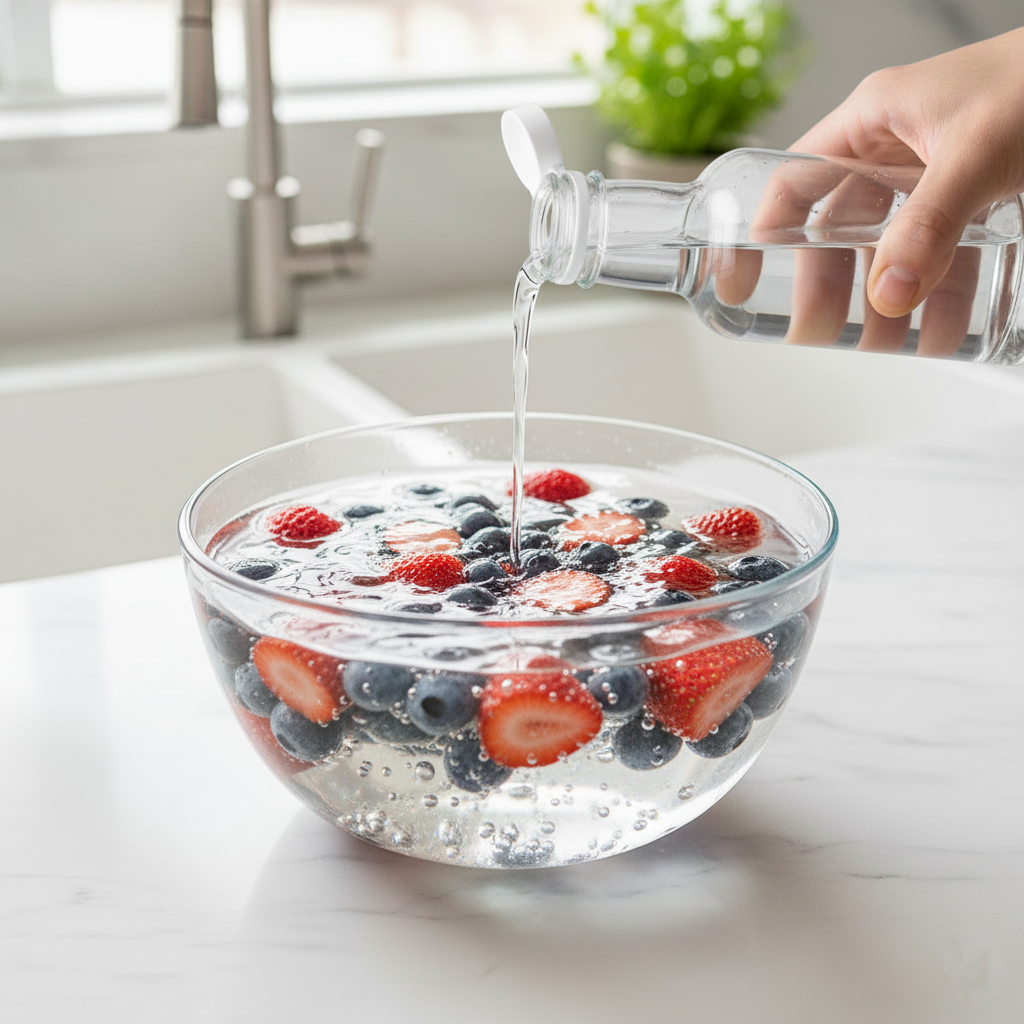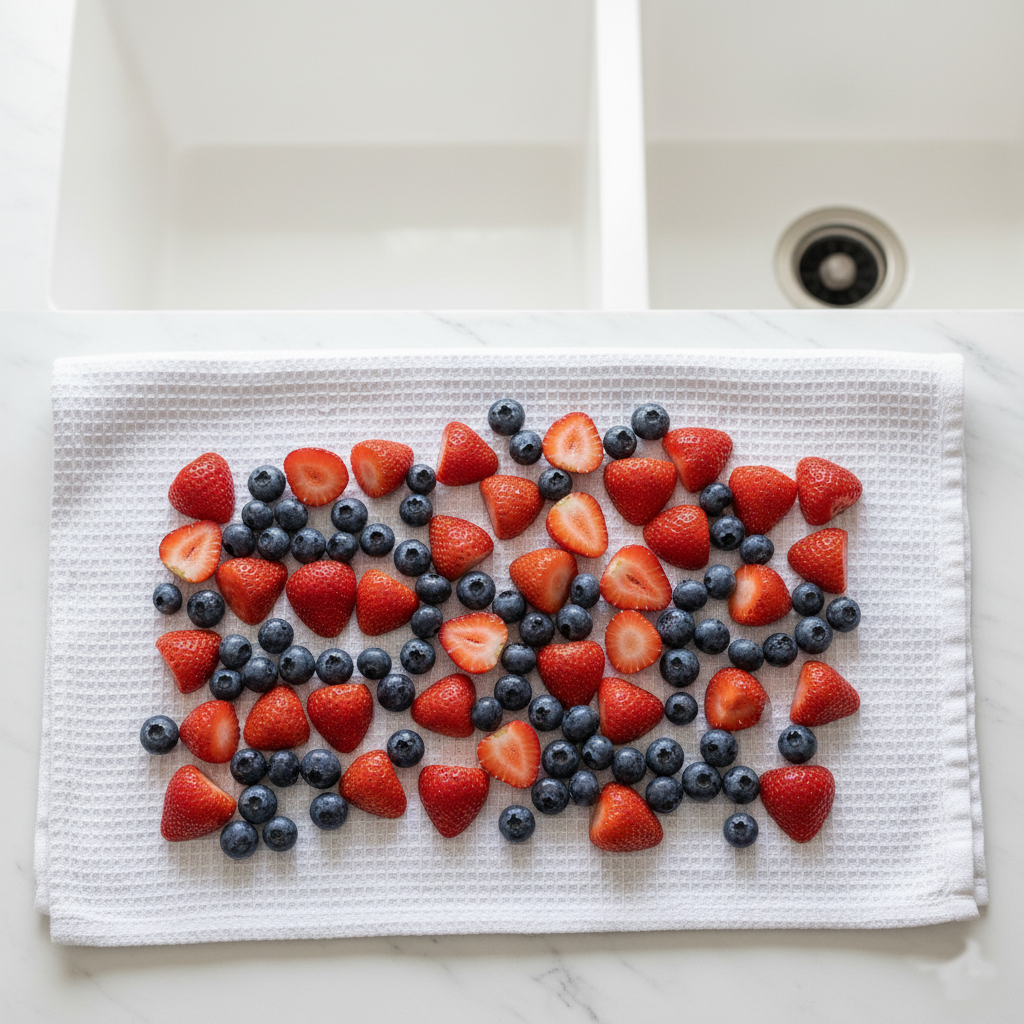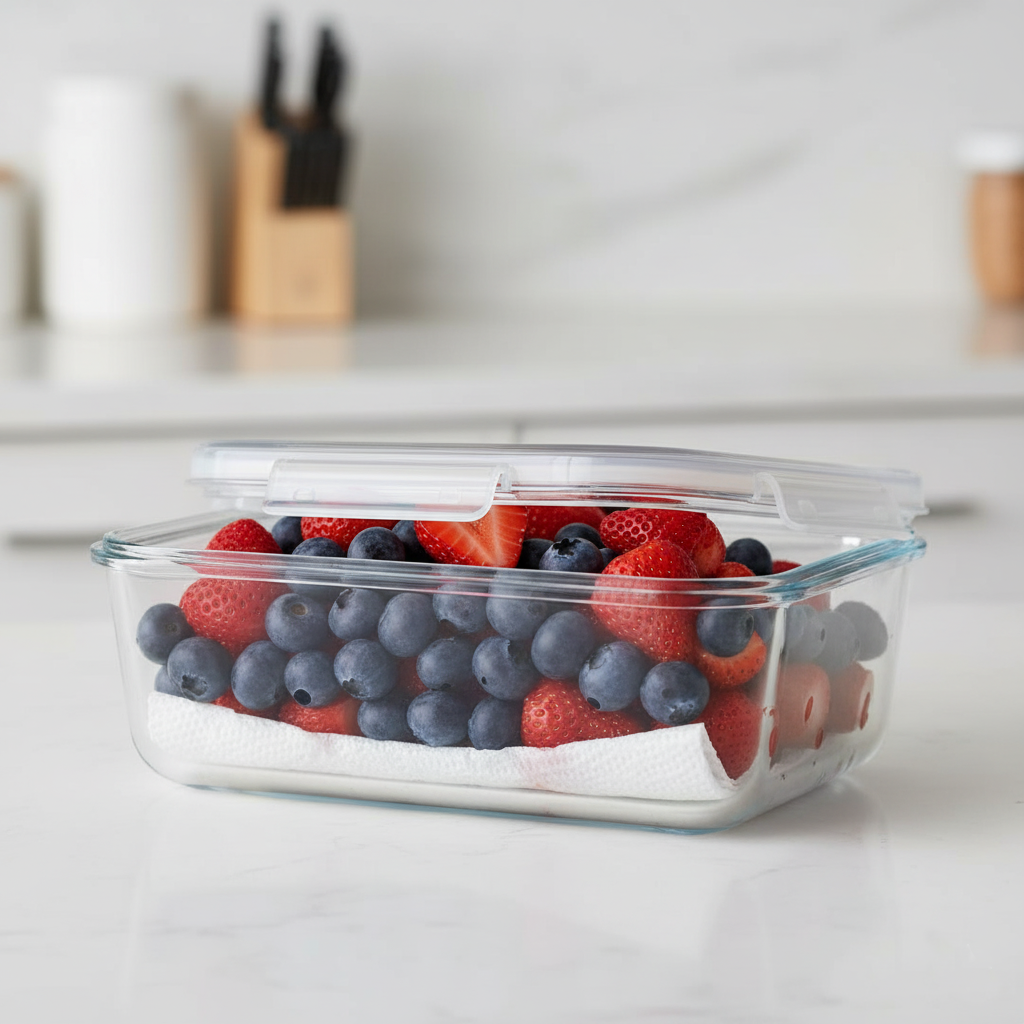A Practical Guide to Washing Fruit with Vinegar
Key Takeaways
- The 1:3 water-to-vinegar ratio is the trick to keeping berries fresh.
- Drying thoroughly after washing is just as crucial as the wash itself.
- This method works best for sturdy berries and grapes.
- A five-to-ten-minute soak is all it takes—any longer isn’t better.
The Real Problem: Why Your Fresh Berries Spoil So Fast
The Simple Science: How a Vinegar Fruit Wash Works
The magic is acetic acid, vinegar’s active ingredient. A 1:3 ratio of distilled white vinegar to water creates a berry bath that kills or washes away spoilage organisms and some pesticides better than plain water [1][2][3].
This safe, gentle process disrupts the pH on fruit skins and removes the “home” mold and bacteria love [4][5]. You don’t “sterilize” fruit (nor should you), but you knock back the microbial load dramatically—science calls this “vinegar food preservation.”
After soaking, a quick rinse removes the vinegar scent and taste. You gain days of extra shelf life with almost no effort, using a process backed by university extensions and food safety experts [6][7]. It’s a core Store Fresh method—one worth adding to your toolkit.
How to Make Strawberries Last Longer: A Step-by-Step Guide
Step 1: Prepare Your Vinegar Wash for Produce
Step 2: Give Your Berries a Quick Soak
Step 3: Rinse Thoroughly with Cool Water
Step 4: Dry Completely Before Storing



Common Mistakes That Ruin Your Results (And How to Fix Them)
Mistake 1: Using the Wrong Vinegar Ratio
A weak solution won’t protect; too strong may leave a taste. Stick to 1:3 vinegar-to-water.
Mistake 2: Not Drying the Fruit Properly
Damp fruit molds quickly. This is the #1 reason vinegar washes “fail.” I learned the hard way the first time—now I always double-check!
Mistake 3: Soaking for Too Long
Over-soaking makes berries mushy or bland. The sweet spot is under 10 minutes.
Mistake 4: Washing Berries You Don’t Plan to Store
Only wash what you’ll keep for days. Prep-to-eat fruit only needs a basic rinse.
What surprised me most: my strawberries lasted an extra week after I got these details right—life-changing for summer snacks!
Your Action Plan for Berries That Stay Fresh Longer
With this easy vinegar fruit wash, you’ve unlocked the number-one home secret for longer berry shelf life. No more wasted produce or last-minute runs to replace spoiled fruit. Take pride in fresher snacks, less food waste, and money saved.
Now that you’ve mastered this vinegar wash to keep berries fresh longer, you’re ready to explore every angle of food preservation. At Fresh Keeper, we created The Ultimate Guide to Shelf Life Extension: Keeping Food Fresh for Your Family as your complete Store Fresh resource, covering everything from proper vegetable storage to vacuum sealing.
Frequently Asked Questions
Should you wash fruit with vinegar?
How long do you leave fruit soaking in vinegar?
The optimal soak time for most berries is five to ten minutes in a solution of one part vinegar to three parts water. This duration effectively kills surface microbes without damaging the fruit’s flavor or texture.
Does vinegar take pesticides off fruit?
Does washing berries in vinegar really work?
Will my fruit taste like vinegar after washing?
What is the best kind of vinegar for a fruit wash?
Can I use this vinegar wash method for leafy greens?
Is a vinegar fruit wash better than commercial fruit washes?
How should I store my berries after the vinegar wash?
Can I reuse the vinegar and water solution?
References
-
- USDA. “Washing Fruits and Vegetables.”
- University of Maine Extension. “Fruit and Vegetable Safety in the Home Kitchen.”
- FDA. “Fresh Produce Safety.”
- Penn State Extension. “Washing, Cleaning, and Sanitizing Produce.”
- Washington State University Extension. “Using Vinegar to Kill Mold.”
- Colorado State University Extension. “Home Food Safety: Wash or Not Wash.”
- Harvard Health. “How to clean your produce.”
- StillTasty. “How Long Do Berries Last?”
Ready to Keep More Food Fresh?
- Get our 1-page printable checklist
- Join the “Stay Fresh” email list
- See the full Triple-S Method series
